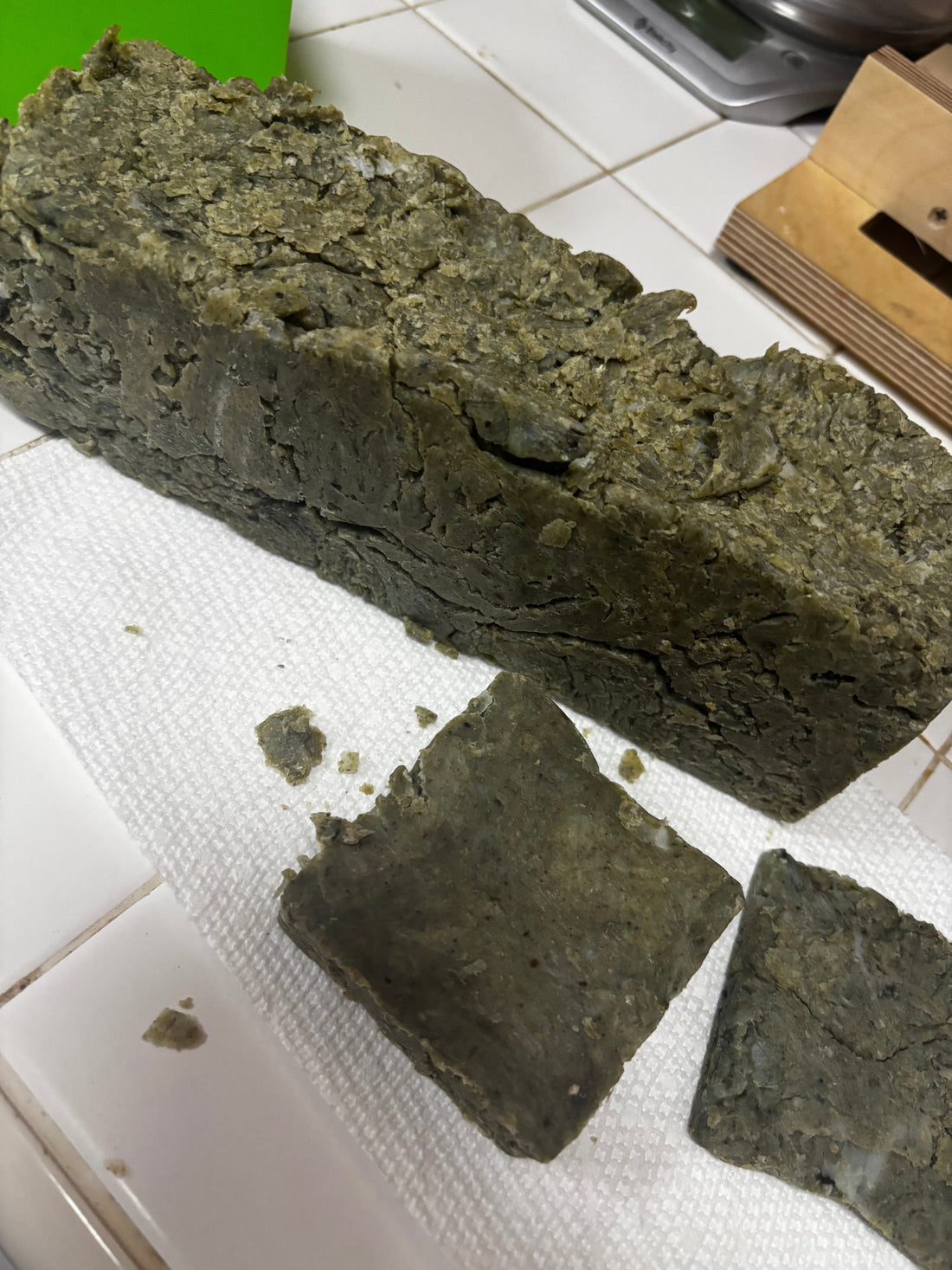
Did Your Cold-Process Soap Seize?
Share
Why Does Cold-Process Soap Seize?
Soap-making can be a joyful, satisfying craft… until it isn’t. I’ve been making cold-process soap for about six months now, and up until recently, it’s been nothing but smooth swirls and creamy lather. From weighing oils to mixing lye, I’ve loved every step. But last week? Let’s just say the soap had other plans. I had never had cold-process soap seize on me, and let me tell you, it is not something I want to experience again.
What Is Cold-Process Soap Seizing?
If you’re new to cold process soap-making, here’s a quick primer:
Soap seizing is when your soap batter thickens way too fast—so fast you can’t mold it, swirl it, or do much of anything with it. One second it’s creamy and perfect, the next it’s a lumpy, immovable mess. Think wet cement with a deadline.
What causes it? A few culprits:
- Fragrance oils that accelerate trace
- High temperatures
- Overmixing
- Overloading your batter with additives
Spoiler: I did all of the above.
My Cold-Process Soap Seize Soap Disaster
I was feeling adventurous and decided to try the Heat Transfer method, where the heat from your lye solution melts your hard oils—skipping the stove. Efficient, right?
Here’s where it went sideways:
I added fragrance oil, goat’s milk powder, kaolin clay, and Dead Sea mud powder... all at once. I grabbed the stick blender, thinking I had time to blend and pour.
I was wrong.
Within seconds, my silky batter turned into a soap brick. The stick blender froze mid-spin. I panicked, grabbed a spatula, and tried to scoop it out like cake batter gone rogue. It wasn’t pretty.

What I Did Wrong (and What I’ll Do Differently)
1. I Didn’t Check the Temperature
“Feels warm” is not a temperature reading. Next time, I’ll use a thermometer to make sure my lye solution and oils are in the ideal range.
2. I Over-Blended
Stick blenders are amazing… and aggressive. I should’ve stirred gently by hand first before using power tools.
3. I Added Too Much Too Fast
I dumped in every fancy additive I owned. Next time, I’ll add one ingredient at a time to test how the batter reacts.
4. I Didn’t Test the Fragrance
Some fragrance oils are known for accelerating trace. I’ll test new scents in a small batch before going all in.
What I Learned About Soap-Making
Soap-making is a science—and sometimes an unpredictable one. Even with a solid plan, things can go sideways. But every failure is a learning moment (and possibly a good story for the blog).
The good news? I’m not giving up. I plan to remake the recipe, tweak the steps, and try again—with a healthy respect for how fast soap can turn on you.
Have You Ever Had Cold-Process Soap Seize?
Tell me I’m not alone here!
Have you ever had a batch seize on you? Did you manage to save it, or did it end up as a weirdly shaped doorstop?
Drop your disaster story in the comments—I’d love to hear how it went. Misery loves company, right?
P.S. I included photos below. Laugh with me (not at me)… or maybe a little of both.

Additional Info:
Want to learn more about seizing soap and how to prevent it? Click here!
You may also be interested in How to Make Handmade Soap with Olive Oil, Coconut Oil & Shea Butter.
